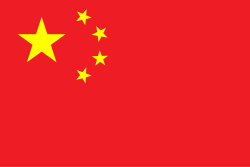Flash Floods in Southern China Claim Five Lives Amid Severe Weather Warnings
 China
ChinaThe Belt and Road Initiative (BRI), introduced by Chinese President Xi Jinping in 2013, seeks to forge a modern Silk Road by developing extensive infrastructure networks across Asia and beyond. Encompassing both land and maritime components, the BRI fosters connectivity and trade, with China investing an estimated $1 trillion in collaborative projects throughout nearly 150 nations, representing two-thirds of the global population.
However, the initiative has created significant geopolitical tension, notably with India. While India initially viewed the BRI as a potential opportunity for enhanced regional connectivity, it has since opposed the initiative, seeing it as a direct challenge to its national security. The China-Pakistan Economic Corridor (CPEC), a flagship project of the BRI that traverses disputed territories claimed by India, remains a focal point for these concerns.
The motivations behind the BRI encompass both geoeconomic and geopolitical dimensions. Experts argue that China aims to secure energy supply routes, reduce domestic overcapacity, and bolster its influence in regional economies. Critics, particularly in India, regard the initiative as a form of debt-trap diplomacy, accusing China of encroaching on regional sovereignty and potentially exacerbating tensions in contested areas like Kashmir.
As the BRI approaches its second decade, its implications for global politics, especially in the Indo-Pacific region, continue to evolve. India's resistance to the BRI exemplifies its strategic efforts to counter China's influence and maintain its preeminence in the region.
 China
China China
China China
China